Today, it’s necessary to have a strong online presence because the economy is mainly digital. Online success depends greatly on e-commerce web development for businesses that do not sell face-to-face.
Regardless of whether you’re starting a web store or upgrading one, learning how E-Commerce Website Development Services works can help you compete better. Our service at ROILift includes creating custom e-commerce systems to turn visitors into customers and make a significant return on investment. You should know the following.
E-commerce web development is the process of setting up and maintaining websites that businesses use to sell their goods or services online. It happens in these ways-
- Front-end design means the way your website looks and feels for users.
- How your site is developed server-side for tasks like shopping, using databases, and handling orders
- Joining third-party systems like those for making payments, customer management, delivery, and marketing.
- An effective e-commerce site attracts visitors, but it’s also essential that it runs well, is secure, works on phones, and makes it easy for buyers to purchase products.
Main Advantages of an Effective E-commerce Website
For your e-commerce website to do well today, it should have these essential features.
- Websites that can respond well to any device type- Almost every other purchase made online is on mobile devices. E-commerce users should be able to access your site easily and have a pleasant experience regardless of what device they are using.
- Easy and safe ways to pay– To be trusted, a site should feature SSL certificates, secure checkout, and connect to well-known names in online payments.
- User-Friendly Navigation- Both searching and categorizing products help users get to the products they want quickly.
- Pages for each product have been enhanced– All product pages should display top images, attractive descriptions, feedback from customers, and easy ways for people to take action.
- Search Engine Optimization and Performance Optimization- When your site is optimized for SEO, it appears in web searches and is noticed for the correct keywords.
Why E-commerce Web Development Should Not Be Overlooked
- Increases the number of products sold and the number of successful orders– A properly designed e-commerce site leads users smoothly from the start of browsing to actually buying, which increases your chances of sales and fewer lost orders.
- Boosts Confidence in Your Brand– A site that is protected and functions smoothly earns people’s trust and brings them back to shop again.
- Your business can grow and use it as needed– A platform designed for your business can be updated as you require more products, better inventory, or efficient shipping.
- Maximizes how customers feel when using products and services– Quick loading, easy use on mobile devices, and straightforward checkout help make buying more pleasant for users.
We don’t limit ourselves to development, we also work as growth strategists. When you use our e-commerce services, your site will look great, be programming-friendly, and get the best possible online marketing.
We Provide the Following:
- Getting a website made just for your business
- Mobile-first development
- No third-party system integrations allowed in this environment
- Maintenance and support are ongoing.
- Digital marketing and SEO
Conclusion
For anybody starting or expanding an online store, ROILift is here to provide web development that ensures results, and if you are looking forward to a dependable Search Engine Optimization Consultant, ROILift is the best option for you. If you need help building a better e-commerce experience, contact us now to schedule your free consultation.



